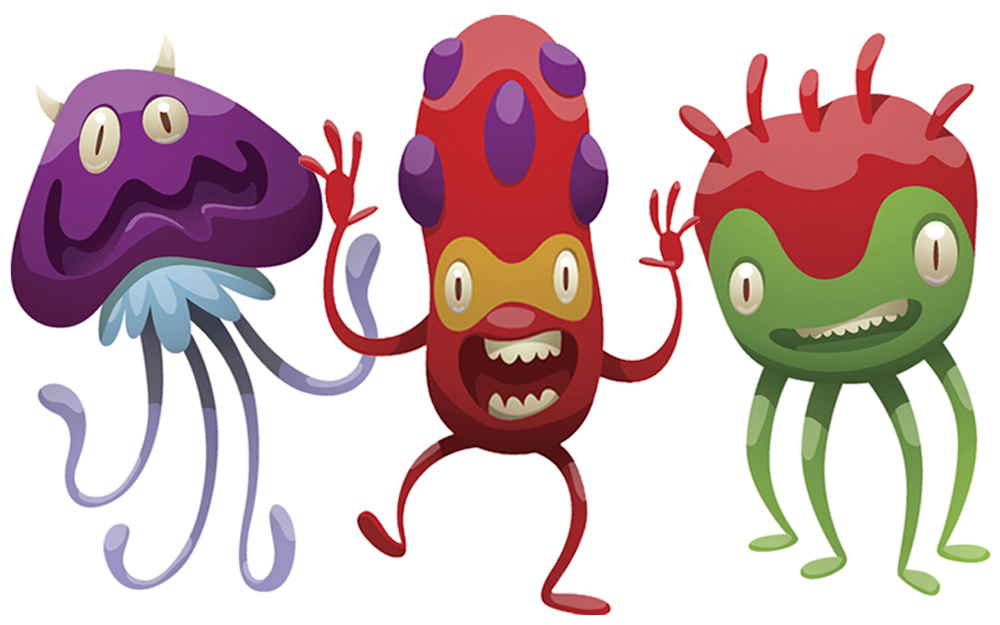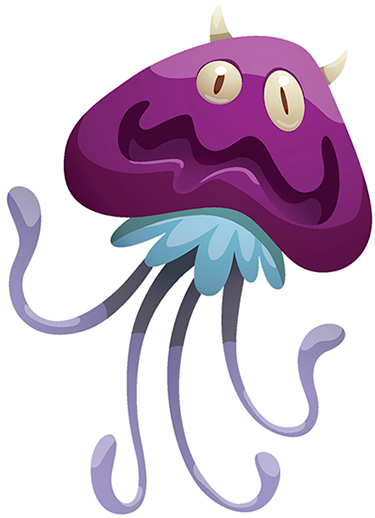Cedars-Sinai Blog
Taming the Boogeymen: When Medical "Monsters" Do Good
Oct 27, 2017 Cedars-Sinai Staff

"Scary" toxins and microbes seem to be everywhere. Look more closely, however, and you'll find that some aren't all bad.
Scorpion venom, the Zika virus, and even flesh-eating bacteria can fight diseases and help solve tough medical problems. Scientists are harnessing the qualities of these biological boogeymen, often taking the traits that make them health threats and turning them into cures.

The monster: Zika virus
Why it's feared
Zika virus is transmitted by certain mosquitoes, causing an illness that includes fever, skin rash, pinkeye, muscle and joint pain, and headache. It's most feared for the risks it poses to babies still in the womb. When it infects a pregnant woman, it can also infect the fetus and cause babies to be born with microcephaly, a smaller-than-expected head, often due to the brain not developing properly.
What it's helping
Zika virus is being studied as a treatment for brain tumors.
How it's helping
The Zika virus naturally homes in on brain cells. When it enters a cell that's dividing, it kills that cell. This is a disaster for a developing embryo, where cell division is a normal process. But in adults, brain tumors are the main cause of dividing cells.
A virus like Zika that travels to dividing brain cells and kills them might be a solution to malignant brain cancer, according to Dr. Keith Black, chair of Neurosurgery at Cedars-Sinai. Dr. Black and his team have been studying the virus as a treatment, using brain tumor cells derived from patients. So far, it's been able to kill tumor cells in the lab.
How did Dr. Black get the idea? He was talking with a Yale neurobiologist who was working with the Zika virus. When the scientist described how it behaves and what it does, Dr. Black identified it as a possible tool against brain tumors.
"We don't have an effective treatment for malignant brain cancer," says Dr. Black. "Since the brain and brain tumors are my field, once I understood what the virus was doing, I thought of this application."
Because of the problems it causes for newborns, we know the Zika virus can cross the blood-brain barrier and get into brain cells—a frequent obstacle for other therapies. The virus also has limited toxicity, only circulates in the body for about a week, and treatment with it might not have to be repeated like chemotherapy treatments.
Dr. Black and his team are in the process of designing an early clinical trial. Other institutions have also picked up on the idea, and publications are starting to appear in peer-reviewed journals.

The monster: Streptococcus pyogenes, a type of flesh-eating bacteria
Why it's feared
This bacteria can cause everything from a sore throat to a rare but serious infection called necrotizing fasciitis, aka flesh-eating disease, which starts just below the skin and can spread to other tissue such as muscle and fat. The disease is fatal in as many as 40% of cases.
What it's helping
Streptococcus pyogenes makes an enzyme that can help patients avoid rejection or organ failure after kidney transplants.
How it's helping
Treating kidney transplant patients with a drug made from this enzyme significantly reduced, and in most cases eliminated, the antibodies that can cause rejection or failure. Findings from the Cedars-Sinai-led study were published in the New England Journal of Medicine.
"This bug kills about 600,000 people every year worldwide, mostly from sepsis," says Dr. Stanley C. Jordan, medical director of the Kidney Transplant Program at Cedars-Sinai. "The reason it's so virulent is that it destroys the immune system's ability to eliminate it."
Most of the time, weakening the immune system is not good. But in transplant patients, the immune system can attack the new organ.
About 15 years ago, researchers in Sweden were studying this strain of Streptococcus and noticed that the strange protein pattern of a particular enzyme showed up in humans, but not in cows. They named it IdeS, or immunoglobulin degrading enzyme of Streptococcus.
"IdeS cuts the antibodies that can cause rejection in half," says Dr. Jordan. "It dismembers them and they no longer work."
Up to 35% of patients on the kidney transplant list—more than 100,000 people—are considered sensitized, meaning they have a higher risk of transplant rejection. Everyone has human leukocyte antigens (HLA), proteins that are used by the immune system to defend against bacteria, viruses, and other invaders. Sensitized patients have antibodies that detect HLA from a donated organ and attack the organ, posing a major obstacle to successful transplantation.
In the study, Dr. Jordan and his team delivered the IdeS medication to patients via IV for about half an hour before their transplants were performed. The drug eliminated the antibodies and allowed for transplants in 24 of 25 cases where the patient and donor had incompatible HLA proteins.
"It's an enemy of humans that's giving a little bit back," says Dr. Jordan.

The monster: scorpion venom
Why it's feared
It's a neurotoxin that scorpions use to paralyze and kill their prey; it is dangerous to humans.
What it's helping
In clinical trials, scorpion venom is being used to illuminate brain tumor cells so they can be distinguished from healthy cells during surgery.
How it's helping
Researchers at Cedars-Sinai developed an imaging device consisting of a special camera and an imaging agent derived from scorpion venom. The imaging agent uses a synthetic version of a protein found in the venom of the deathstalker scorpion.
The imaging agent homes in on brain tumor cells. When stimulated by a laser, it emits a glow that is invisible to the eye but can be captured by the camera. The device has been tested on animal models, and those studies have become the basis for clinical trials in humans.
Malignant brain tumors called gliomas are among the most lethal tumors, with patients typically surviving about 15 months after diagnosis. "Survival rates increase if we can remove all of the tumor, but it's impossible to see with the naked eye where tumor stops and brain tissue starts," says Dr. Black. "Current imaging systems don't provide a definitive view. We hope this will be the answer."


